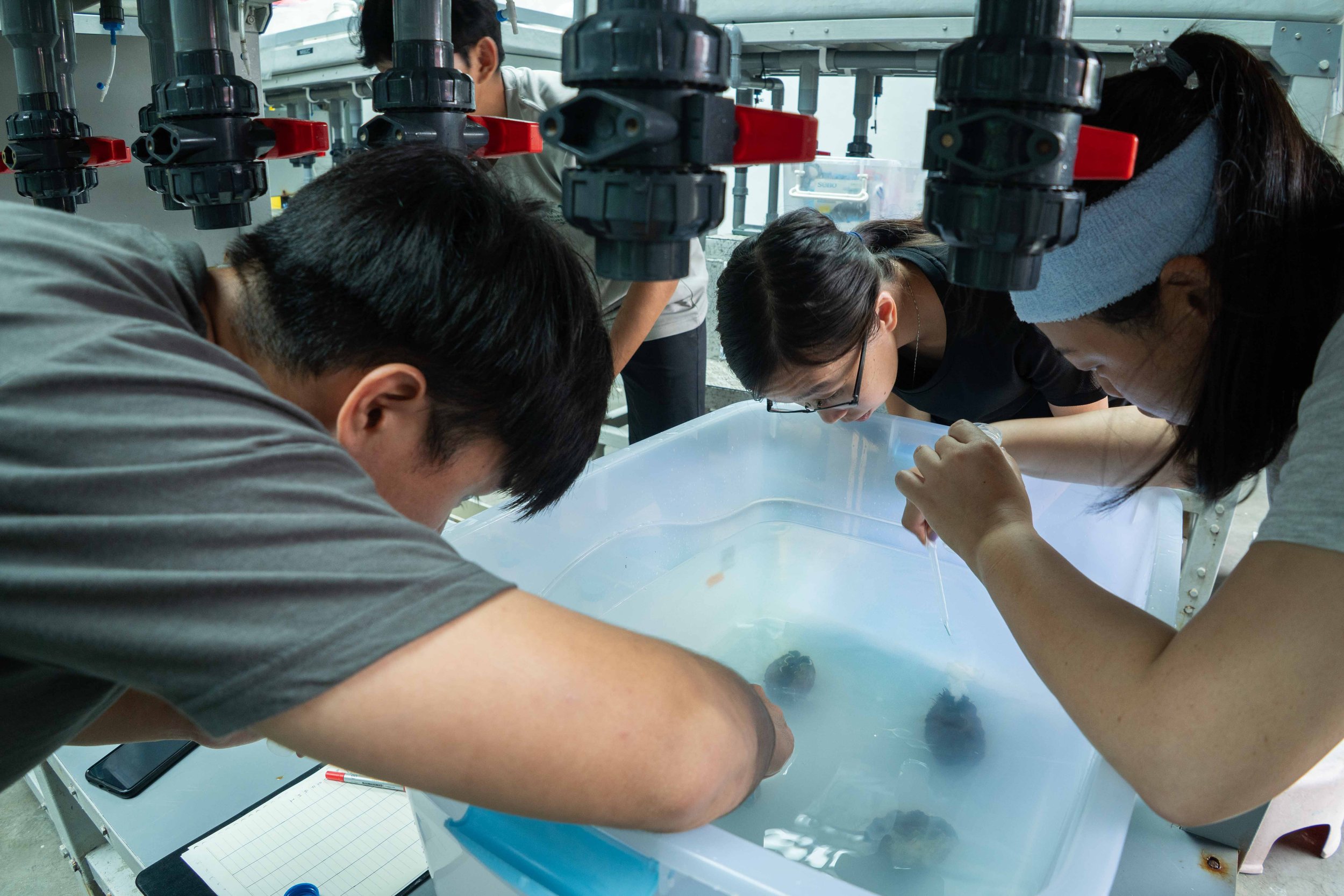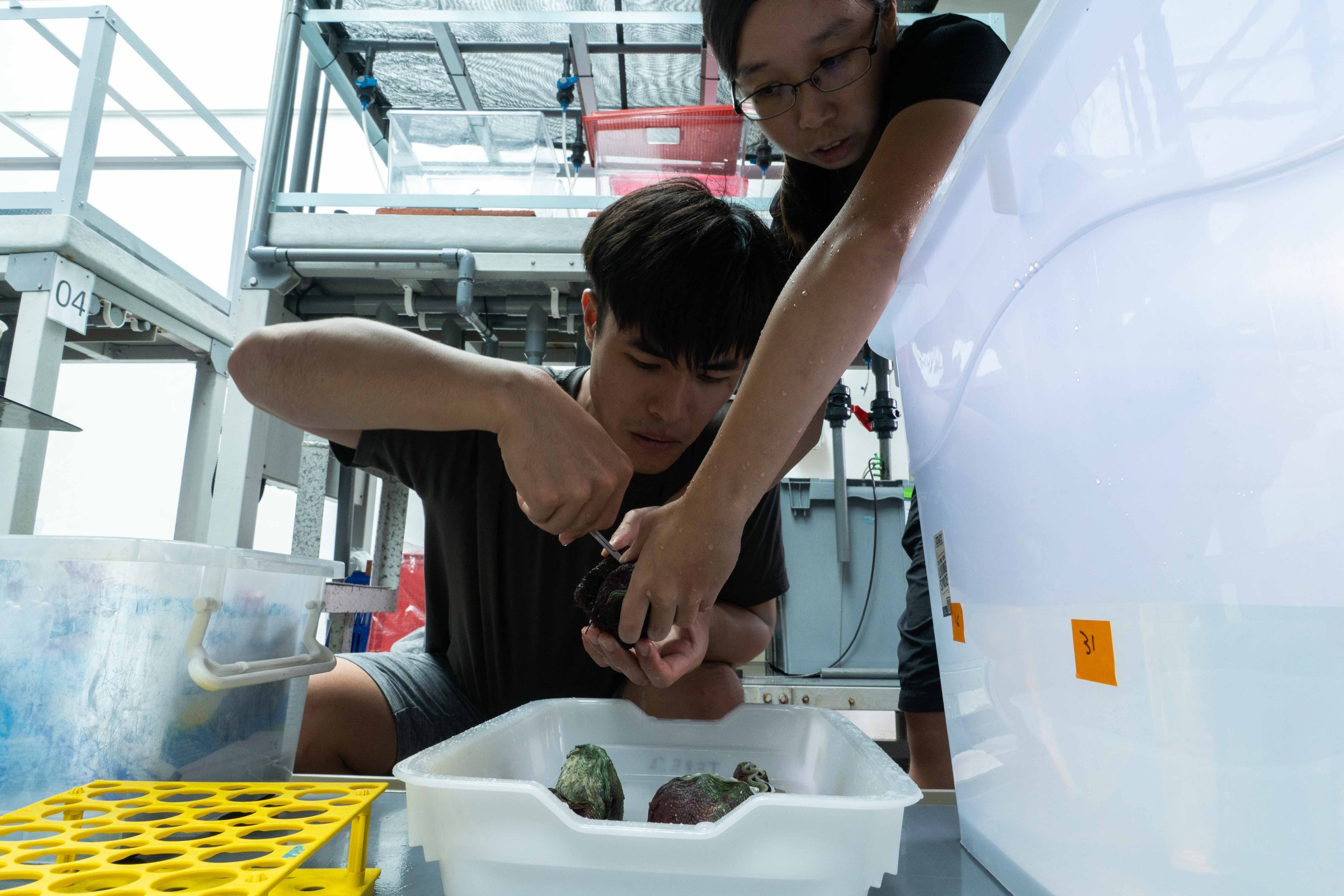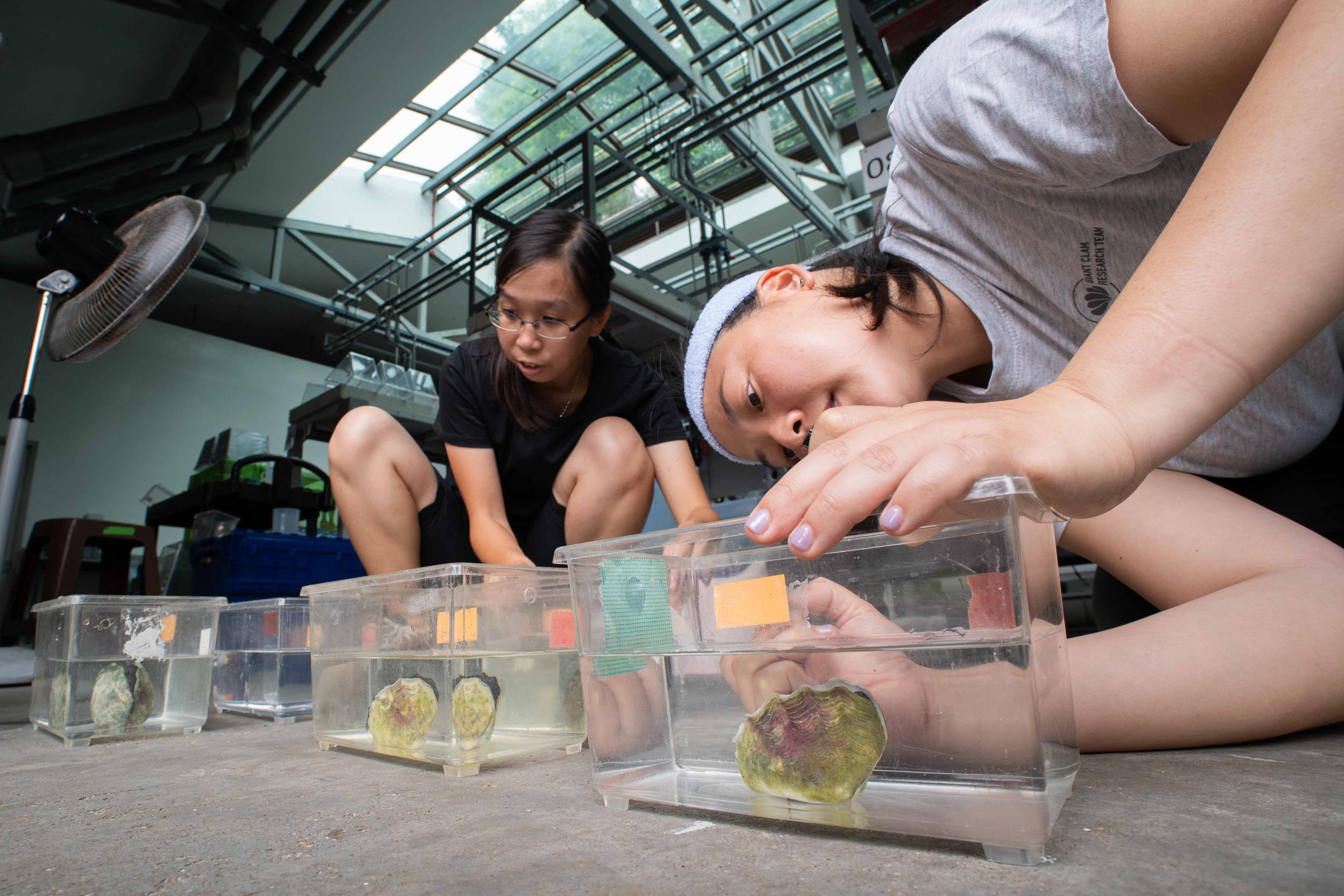
In Singapore, the most frequently asked question upon learning the existence of giant clams in one of the smallest countries in the world is “There are Giant Clams here?’’ In the past months, I joined our own local researcher who saw her first giant clam in. Since that event, she has become known as The Giant Clam Girl and started her research since 2006. Today, she continues her outreach efforts and inspires new generations of both marine life enthusiasts and students.


Giant Clams in Singapore
I followed Dr Mei Lin’s team to the neighboring southern islands from the mainland where they conducted research on this poorly understood animal group by deploying instruments and equipment. Back in the lab, Dr Mei Lin Neo has bred young sexually mature specimens by artificially stimulating the fertilization process.
Giant clams are collected and poached throughout their range where they are distributed in Asia for pet and ornamental trade. By protecting giant clams, you protect more as they provide homes for the smaller critters, corals, and the surrounding reef habitat.
The artificial breeding process
Giant clams are hermaphroditic so they possess both male and female sex organs. To make them spawn, serotonin is injected into the giant clam to release a reaction that causes a contraction in their sexual organ, releasing the sperm that appears in the form of cloudy mass in the water. The eggs are released after, to be fertilised by the released sperm.















